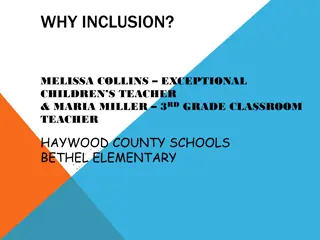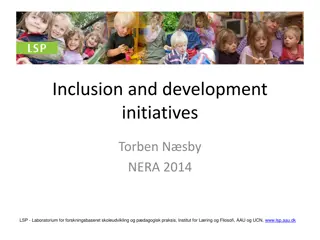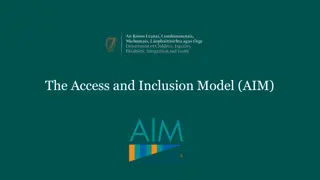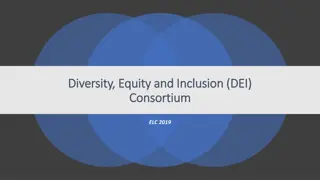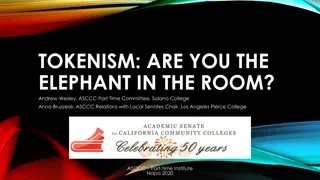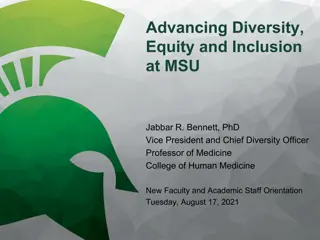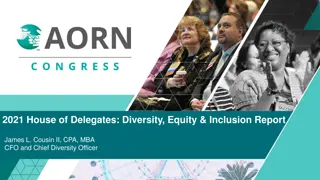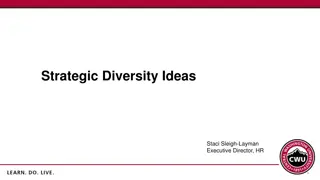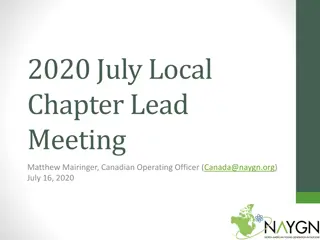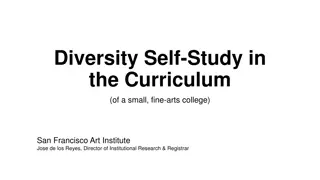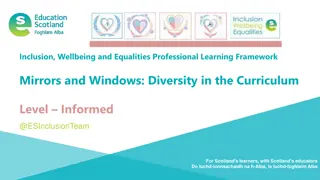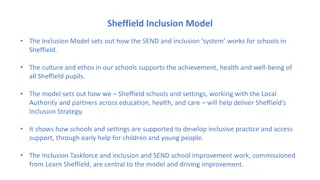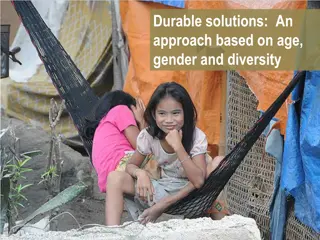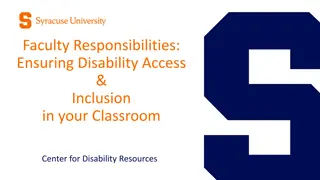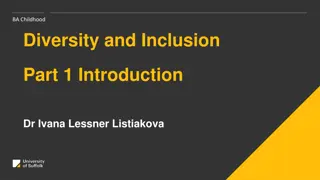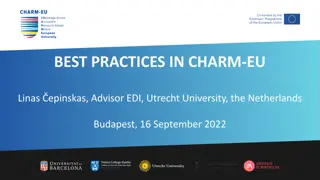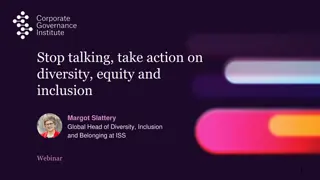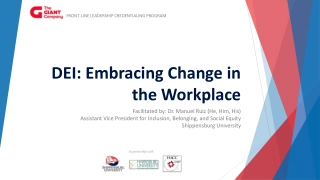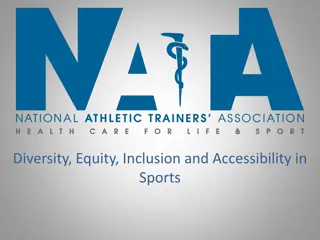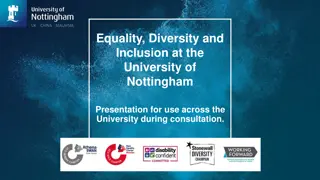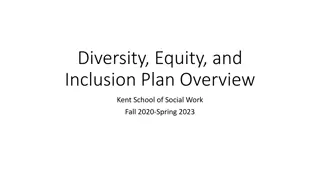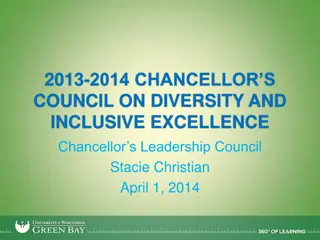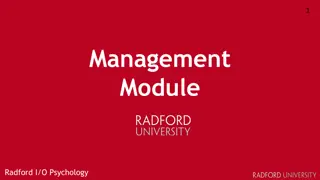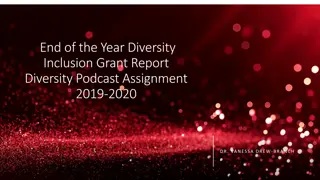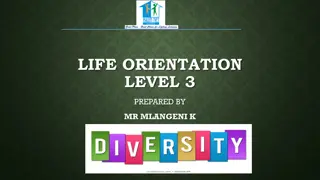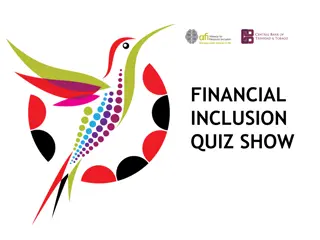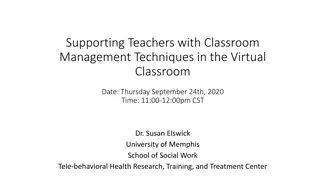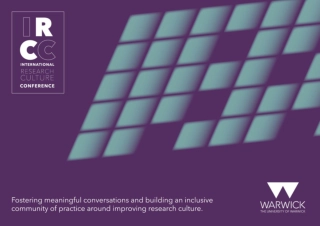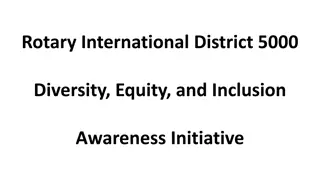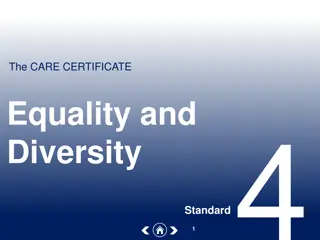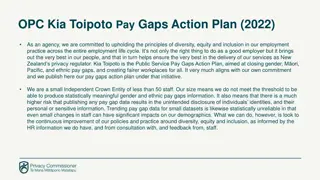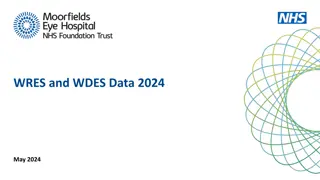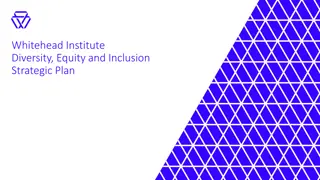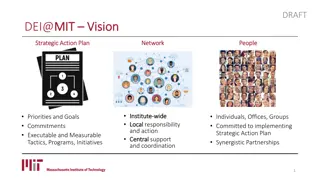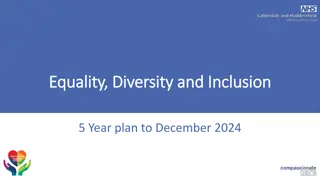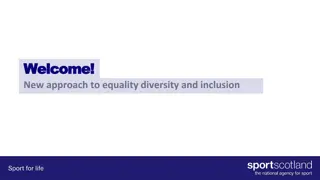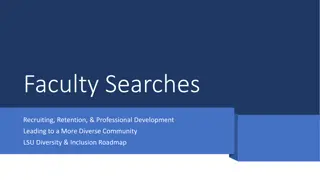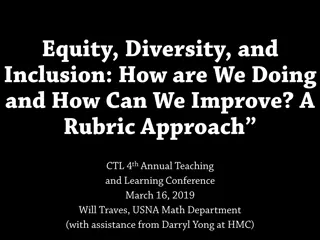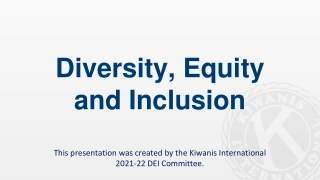Practical Solutions for Diversity and Inclusion in the Classroom
Addressing conflict and incivility in the classroom through practical solutions for social justice, diversity, and inclusion is crucial. It matters to improve intergroup relations, foster positive attitudes towards different cultures, combat stereotypes, and create a welcoming environment for all students. Understanding the impact of unequal governmental regulations and exploring social justice topics such as racism, sexism, ageism, and more are essential for educational settings. Tips for educators include valuing students' identities, challenging stereotypes, and fostering cultural humility. Establishing brave spaces with common ground rules encourages respectful dialogue and critical thinking.
Download Presentation

Please find below an Image/Link to download the presentation.
The content on the website is provided AS IS for your information and personal use only. It may not be sold, licensed, or shared on other websites without obtaining consent from the author. Download presentation by click this link. If you encounter any issues during the download, it is possible that the publisher has removed the file from their server.
E N D
Presentation Transcript
SOCIAL JUSTICE, DIVERSITY AND INCLUSION IN THE CLASSROOM Practical Solutions for Addressing Conflict and Incivility Mary M. Lewis, Ph.D., ABPP
WHY IT MATTERS Elephant in the room Improves intergroup relations Facilitates positive attitudes of other cultures Exposes and fights stereotype threats Identity (of student and faculty) impacts learning Demonstrates openness http://education.cu-portland.edu/blog/news/teaching-social-justice/
BUT MY CLASSROOM DOESNT APPLY BECAUSE. ALL classrooms should be aware of and open to conversations on diversity and inclusion. Classroom setup (physical and otherwise) can be welcoming or alienating, and send messages about power & privilege (which impacts learning) Unwritten cultural norms may not be explicitly stated or consistent Isms (racism, sexism, etc) are present and influential in all settings Unequal governmental regulation (can be direct or indirect; e.g, Poverty, Access to Healthcare, Labor Laws, Civil Rights, etc.) influences student success
SOCIAL JUSTICE TOPICS Inter-social Treatment, such as . Racism Sexism Ageism Heterosexism Etc. Unequal Governmental Regulation (can be direct or indirect), such as Poverty Death Penalty Environmental Rights Access to Healthcare Labor Laws Civil Rights Access to Education
SOME ADVICE FOR EXPLORING SOCIAL JUSTICE/DIVERSITY Make getting to know students a key component of any social justice teaching. Value students lives, identities, and lived experiences, e.g., Asset-based views of unfamiliar identity groups Commit to avoiding and challenging stereotypes Sense of openness and cultural humility Let students define their own identities Know that not all students feel the same way about these issues. Familiarize yourself with the material before teaching. Keep your administrator in the loop. http://www.cultofpedagogy.com/social-justice- resources/
BRAVE SPACES: COMMON GROUND RULES Agree to Disagree Don t take things personally Challenge by Choice Respect (students and their experiences) No attacks Show support while encouraging deeper level of analysis/critical thinking
WHY DONT PROFESSORS DISCUSS SOCIAL JUSTICE/DIVERSITY IN CLASSROOMS? Students are Resistant to the Topic Teachers are Worried About Classrooms Out of Control /Negative Fear of Offending Anyone Teachers Worry Speaking Out Leads to Negative Outcomes (e.g., evals, job) Lack of Knowledge http://www.vox.com/2015/6/3/8706323/college- professor-afraid
MANAGING DIFFICULT DIALOGUES & INCIVILITY DO NOT: Do Nothing/Ignore Sidetrack the Conversation Appease the Participants Terminate the Discussion (e.g., put a condition on how the dialogue should be discussed or conducted, tabling the discussion, ask participants to contact them after the workshop or class, or tell participants to calm down or discuss this rationally. ) Become Defensive
MANAGING DIFFICULT DIALOGUES & INCIVILITY DO: Define expectations/ground rules at the outset Decrease Anonymity Actively Listen and Reflect Seek Feedback from Students Encourage Active Learning Deal with Troublesome Behaviors (When They Occur) Model Respectful and Empathic Behaviors especially times you make mistakes
ADDITIONAL TIPS Facilitate and model active listening behavior Be aware of verbal and non-verbal cues Understand that active participation is exhibited in a number of ways Set limits (e.g., one-minute rule or rule of two ) This is not a debate(e.g., where the goal is to win ); it is a discussion (e.g., the goal is understanding) Have students reflect at the end (e.g., one-minute paper ) Be patient! No change may occur immediately; the process is as crucial as the goal.
RESOURCES http://www.socialstudies.org/standards/strands http://www.cultofpedagogy.com/social-justice-resources/ http://www.facultydiversity.org/page/Support http://www.edudemic.com/6-videos-use-social-justice-lessons/ http://www.whiteaccomplices.org/ http://www.tolerance.org/classroom-resources


